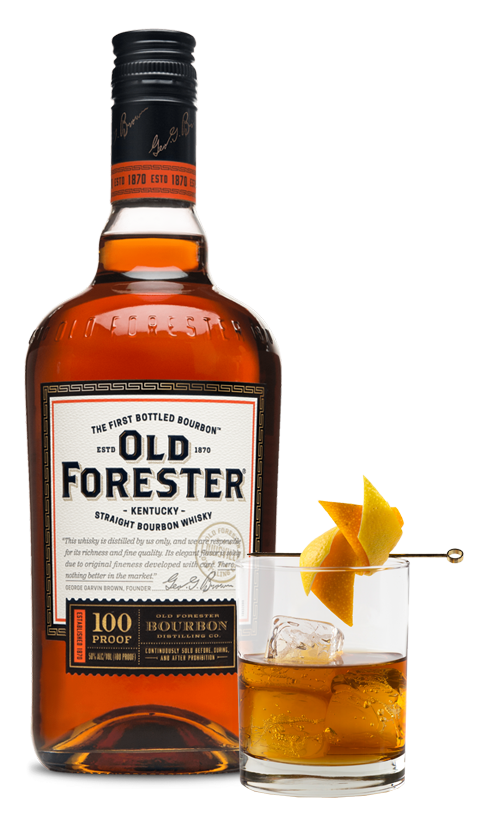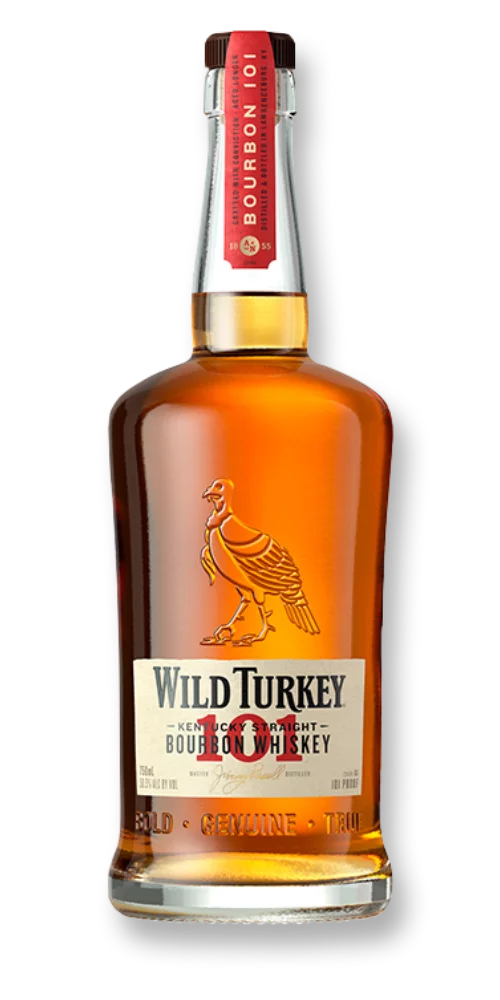
Are you a whiskey enthusiast trying to decide between Old Forester 100 and Wild Turkey 101? You’re not alone. These two bourbons are often compared due to their similar proof and price points. However, there are some key differences to consider when choosing between the two.
Table of Contents
History of Old Forester 100 and Wild Turkey 101
 photo credit: www.oldforester.com
photo credit: www.oldforester.com
Old Forester 100’s History
Old Forester 100 is a bourbon whiskey produced by the Old Forester Distillery, which was founded in 1870 by George Garvin Brown. It is one of the oldest continuously produced bourbons in the United States. The brand was named after Dr. William Forrester, a Louisville physician who was a friend of George Garvin Brown. The whiskey was originally sold exclusively to doctors as a medicinal product during the prohibition era.
In 1910, Old Forester became the first bourbon to be sold in sealed glass bottles, which helped to ensure its quality and authenticity. The 100 proof version of Old Forester was introduced in 1992, and it quickly became a popular choice among bourbon enthusiasts due to its rich flavor and smooth finish.
 photo credit: www.wildturkeybourbon.com
photo credit: www.wildturkeybourbon.com
Wild Turkey 101’s History
Wild Turkey 101 is a high-proof bourbon whiskey produced by the Wild Turkey Distillery in Lawrenceburg, Kentucky. The brand was founded in 1855 by Austin Nichols, and it was named after a wild turkey that had been hunted and killed by Thomas McCarthy, a distillery executive. The 101 in the name refers to the proof of the whiskey, which is 50.5% alcohol by volume.
Wild Turkey 101 is made from a blend of corn, rye, and barley, and it is aged for at least six to eight years in new, charred oak barrels. The whiskey is known for its bold, spicy flavor and smooth finish. It has won numerous awards and accolades over the years, including a gold medal at the San Francisco World Spirits Competition in 2019.
Production Process
Old Forester 100’s Production Process
Old Forester 100 is a bourbon whiskey that is made from a mash bill consisting of 72% corn, 18% rye, and 10% malted barley. The whiskey is distilled at the Brown-Forman Distillery in Louisville, Kentucky, and is aged for at least four years in new, charred oak barrels. The barrels are stored in the distillery’s warehouse, where they are exposed to the natural elements, such as temperature and humidity, which affect the aging process.
Once the whiskey has aged to perfection, it is blended and bottled at 100 proof, which means it contains 50% alcohol by volume. The bottling process is done with great care to ensure that the whiskey maintains its rich flavor and aroma.
Wild Turkey 101’s Production Process
Wild Turkey 101 is a bourbon whiskey that is made from a mash bill consisting of 75% corn, 13% rye, and 12% malted barley. The whiskey is distilled at the Wild Turkey Distillery in Lawrenceburg, Kentucky, and is aged for at least six to eight years in new, charred oak barrels. The barrels are stored in the distillery’s warehouse, where they are exposed to the natural elements, such as temperature and humidity, which affect the aging process.
Once the whiskey has aged to perfection, it is blended and bottled at 101 proof, which means it contains 50.5% alcohol by volume. The bottling process is done with great care to ensure that the whiskey maintains its rich flavor and aroma.
Taste Comparison
When it comes to taste, Old Forester 100 and Wild Turkey 101 have distinct differences that set them apart. Here’s a breakdown of their flavors:
Old Forester 100
Old Forester 100 has a spicy profile with notes of cinnamon, nutmeg, and black pepper. It also has a hint of caramel sweetness that balances out the spice. The finish is warm and long-lasting, with a slight burn that lingers on the tongue.
Wild Turkey 101
Wild Turkey 101, on the other hand, has a bolder flavor with notes of charred oak, vanilla, and caramel. It has a smooth, creamy texture and a slightly sweet finish with a hint of spice.
Price Comparison
When it comes to price, both Old Forester 100 and Wild Turkey 101 offer great value for the money. Old Forester 100 typically retails for around $25–30, while Wild Turkey 101 is slightly cheaper at around $20–25 per bottle.
While the price difference between the two may not be significant, it’s worth noting that Old Forester 100 is bottled at a slightly higher proof than Wild Turkey 101, which can make it a better value for those looking for a higher alcohol content.
Conclusion
Both Old Forester 100 and Wild Turkey 101 are excellent bourbons that offer unique flavor profiles.
If you prefer a spicier bourbon with a higher rye content, then Old Forester 100 may be a better option for you. On the other hand, if you enjoy a bourbon with a more pronounced oaky flavor, then Wild Turkey 101 may be the way to go.
When it comes to price, both bourbons are similarly priced and offer great value for their quality.
The choice between Old Forester 100 and Wild Turkey 101 ultimately comes down to personal preference. You can’t go wrong with either option, so why not try both and see which one you like best?
Related Posts
If you’re interested in comparing bourbons, you might want to check out some of these related posts:
- Battle of the Bourbons- E.H. Taylor, Jr. Small Batch vs Single Barrel: This post compares two bourbons from the E.H. Taylor, Jr. line. It provides tasting notes and a recommendation for which one to choose.
- Maker’s Mark vs Bulleit Bourbon: Which One Should You Choose?: This post compares two well-known Kentucky Straight Bourbon Whiskeys. It provides a brief history of each brand and tasting notes.
- Buffalo Trace vs Woodford Reserve: Which Bourbon Reigns Supreme?: This post compares two highly regarded bourbons. It provides a brief history of each brand and tasting notes.
- Jim Beam vs Evan Williams: Which Bourbon Whiskey Comes Out on Top?: This post compares two affordable yet delicious bourbon whiskeys. It provides a brief history of each brand and tasting notes.
- Eagle Rare vs Blanton’s Bourbon: Which One Should You Choose?: This post compares two high-end bourbons. It provides a brief history of each brand and tasting notes.



